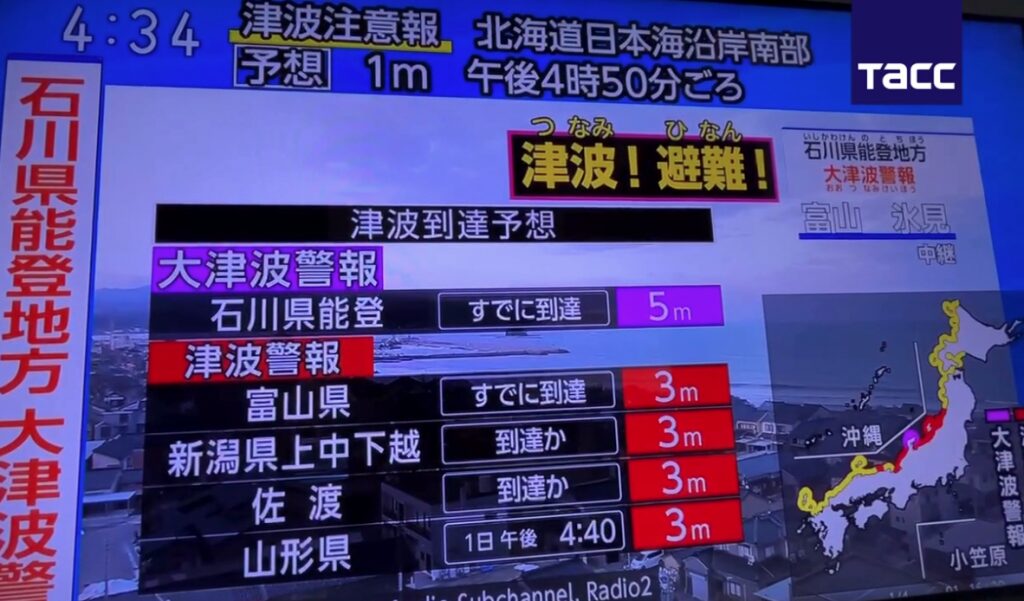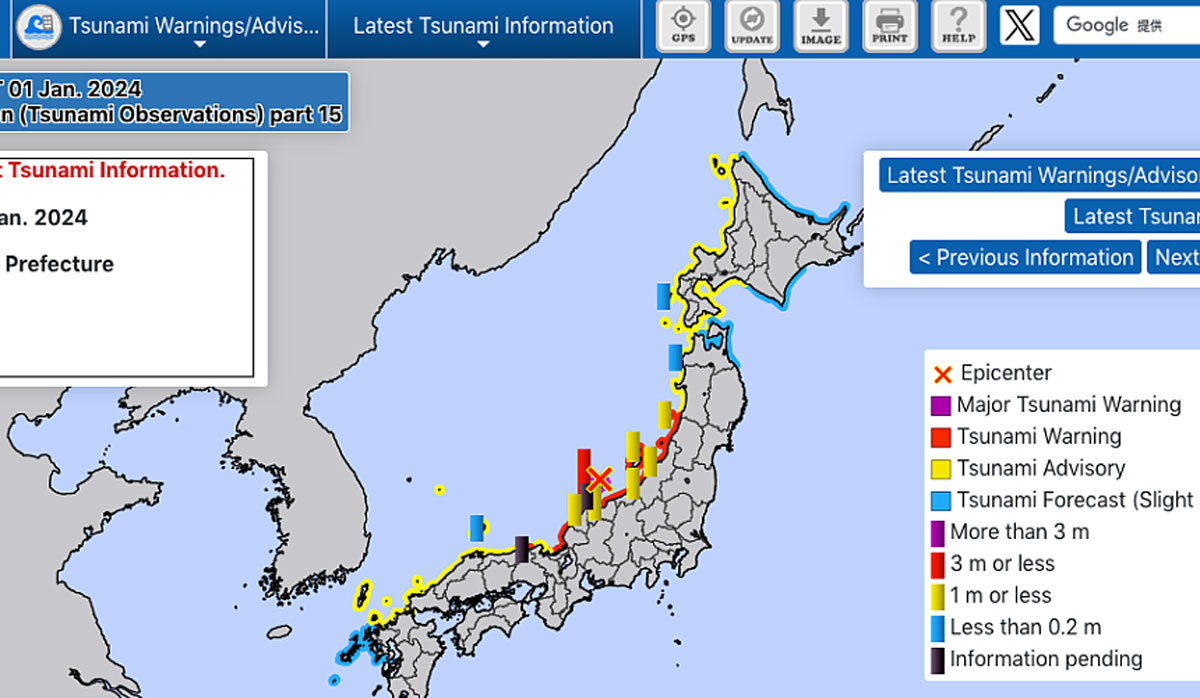Information about the consequences of a series of earthquakes in the central part of Japan with a magnitude of up to 7.6 caused a lot of noise in news channels. In the entire history of observations in Ishikawa Prefecture, such indicators have been achieved for the first time. Roads and some houses built of wood were damaged.
The Japan Weather Service has declared a tsunami warning for the West Coast. According to initial forecasts, the height of the waves could be 5 m. And although it almost immediately became known that in reality waves of up to 1.2 m reached the shores, residents of coastal areas were asked on television and radio to go to a safe place. This information was distributed throughout the world media.
Claims of giant 5-meter waves hitting Japan’s west coast have made headlines. Some Telegram channels accompanied these messages with a dramatic video of the sea rapidly flooding the shore, overturning yachts and cars.

These shots had nothing to do with reality since they were filmed 13 years ago, on March 11, 2011. Then Japan suffered from a much more destructive earthquake of magnitude 9.1 and a powerful tsunami. About 20 thousand people died, and the fate of another 2,500 remained unknown. On the same day, an accident occurred at the Fukushima-1 nuclear power plant.
The consequences of this earthquake cannot be compared. To date, Japanese media have reported only two deaths.
Japanese TV announcers read out forecasts of 5-meter waves and calls to take shelter in a safe place in very alarming voices, sometimes breaking into screams.
According to a source in one of the Japanese media companies, this was done on purpose, taking into account the experience of the 2011 tsunami, when forecasts were read out in calm, confident voices — many residents did not take the warnings seriously, which led to additional casualties.

